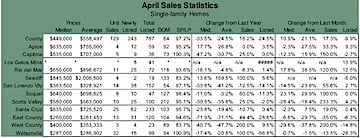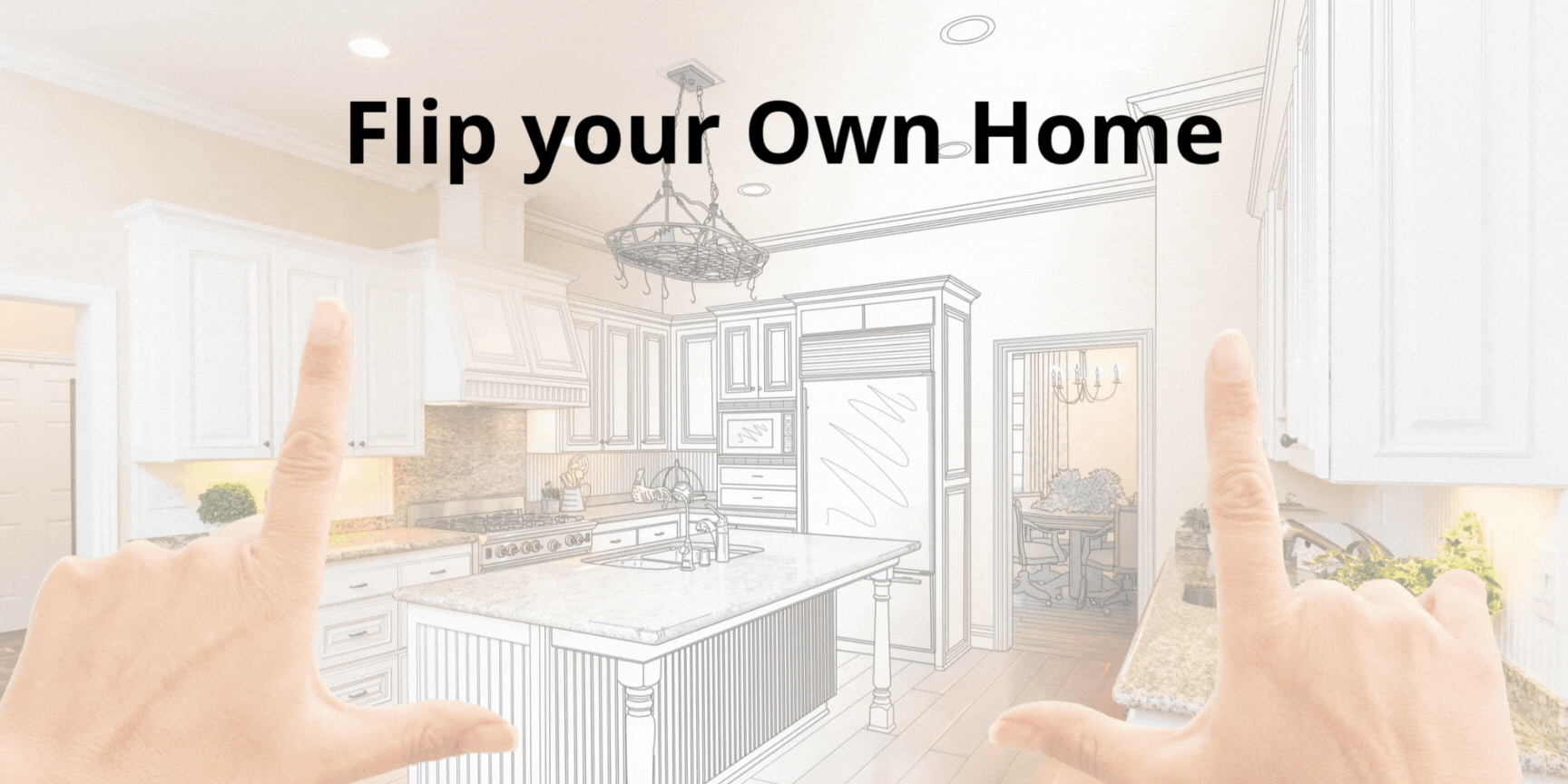Spring has definitely returned to Santa Cruz! We’ve been having some incredible days, and I’ve been enjoying being a new dad here in town, cruising around with wife and baby in the stroller, around the neighborhood, over to Aptos Village Park, down to the Capitola Beach, West Cliff Drive, soaking it all in. It’s been an incredible what, almost six weeks now since Aiden was born?
I must admit, with all the fabulous weather and my beautiful bouncing baby boy to take care of, I’ve taken my eye off the real estate market somewhat. And that’s a good thing – truth be told, I’ve been working, on average, over 80 hours a week for nearly the past two years, and I think that for me, it’s not a sustainable pace. I reckon these days I’m down to something closer to 40-50 hours a week, which does leave some precious time to spend with my wife and amazing little man.
I think that many of us started off the year thinking there would be some Change, right? I think we were promised that, and for good or ill, change has come. Certainly, the real estate market has changed over the past month or two. If you are a subscriber to my newsletter, you may have noticed that last month (April 2009), the median price of housing in Santa Cruz has risen.
Well, I guess that puts the lie to me, right? Here I am saying no no, we’re not at bottom – and now we see rising prices? Scant months after I got up on my high horse and said, “Wait out the storm, ye long-suffering would-be buyers!”
Let’s take a look at these numbers. First, the summary:

So from a median price in March of 2009 of $405,000 we have skyrocketed to a median price of $449,000 – nearly an 11% rise in a single month. Now let’s look at the breakdown of those numbers, divided up into different market areas in Santa Cruz county:
You’re going to have to click on the chart to open it up in a bigger window to actually read the numbers. Taking a closer look, you can see that in every market area except for Rio del Mar (Aptos) and Soquel, the median home price in April was lower than it was in March. Those two areas, however, showed such strong month-over-month gains that they did lift the entire median price up about 10.9% for the county as a whole over the month before.
Except for those two areas, every other market area in Santa Cruz county showed price declines. And let’s not blame it on Watsonville – Watsonville experienced the smallest price drop of all, just 0.7%. Capitola – down 12.3%, Scotts Valley, down 28.4% – and the West county (Bonny Doon, Davenport, Empire Grade, etc.) – down a whopping 28.6%.
Now, hold on a second. Let’s talk about lies, damned lies, and statistics. There is a chorus of voices saying that it looks like we’re hitting bottom – after all, the median price, county-wide, did just increase, right?
Nope, not really. The median price just decreased a whopping 33.5%. The truth is, it is pointless to look at one month compared to the month before, because there is a lot of seasonality in the real estate market. You really need to look at the year before to see how the market performed – and from the statistics, we can see the median home price, county-wide, is actually down 33.5% in April of 2009 compared to a year ago.
And some people are now saying the market is bottoming out?!
One thing that many folks from the “the market is bottoming!” camp like to point out is the number of multiple-offers some listings are receiving. It is true, the market for single-family residences priced under $400,000 is very competitive. Most of those properties in our neck of the woods are to be found in the Watsonville area, and there’s no lack of multiple-offer situations going on down there. There are also a lot of multiple-offer situations going on in San Jose and Salinas – I have a listing in San Jose where I got 34 offers (asking price: $349,900) and another in Salinas where we got a similar number (asking price: $149,900). Surely that means we’re at the bottom, right? Right??
Honestly, I am mystified how people can take a few anecdotes, completely ignore the state of the economy and the housing market as a whole, and now herald, with strident authority, that we are now at the bottom of the market and THIS, TODAY is the time to buy, or you will miss out on the chance of a lifetime.
It’s clear that the bottom is coming – there will be a bottom, someday, and prices will start to rise, eventually. And it’s true, we will only know it by looking in the rear-view mirror – which makes it impossible to say for sure that this is, or is not, the bottom of the market. What’s more, not all market segments will bottom at the same time, so there really is not truly a “bottom” so much as a series of different bottoms for different kinds of properties in different places.
Allow me to tackle the anecdotal evidence head-on. Again, many people point to these multiple-offer situations as evidence we have hit bottom. The thing is, there were many multiple-offer situations going on this time last year. Many. Why do you suppose that is?
I will grant you – there are more this year than last year – more properties getting multiple offers, and more offers getting submitted. Competition is, certainly, stronger this year. So let’s take a look at those charts again, at another key bit of information: the amount of inventory available.
Despite what you may have heard from certain interest groups (California Association of Realtors, National Association of Realtors, ahem), there is not a great selection of homes to choose from on the market. This time last year, there were 1,042 single-family residences available county-wide. Now, there’s just 787 available – that’s a drop of 24.5%. Simply put, there is a lot less to choose from this year than last year – creating more competition for those homes which are available. Good news for sellers, that’s for sure!
The overwhelming majority of these multiple-offer situations happen in the low end of the market – in Salinas, that would be under $250K, in Watsonville, under $350K, in San Jose, under $450K. What kind of homes are selling in these areas at these prices?
Bank-owned homes, that’s what kind. Only foreclosure real estate can sell at those prices. Well, that’s not true – short sales can also occur at those prices, and some people who have had their homes a long, long time may have enough equity in them to compete with all the REOs and short sales. However, I’d bet my bottom dollar that upwards of 75% of all of these sales are bank-owned “REO” foreclosure properties, probably another 10-15% are short sales, and the rest would likely be probate sales and whatnot.
As it happens, there is a distinct lack of REO inventory on the market right now – and again, at these price points, the vast majority of the market consists of REO properties. This inventory shortage comes just at the time when sales hit their peak – the hot time of our real estate market tends to be March through August, that is when more buyers are out shopping compared to the rest of the year.
So why is there a lack of REO inventory? Has there been some dearth of foreclosures, has the foreclosure crisis abated? Not hardly. Change has come, and during the transition, while all this TARP business and Making Home Affordable initiatives were getting going, the lenders had some self-imposed moratoria on foreclosures. That, and many states (including California) enacted laws to lengthen the time it takes to carry out a foreclosure – and that has served to really tighten up the inventory of these low-end properties.
These multiple-offer situations we are seeing now is simply the combination of a very constricted inventory coupled with the seasonal increase in real estate sales.
The good news for home buyers is that this, too, shall pass. The various moratoria have been lifted and the clock is already winding down on the laws lengthening the time it takes to foreclose on a property. What that means is that Notices of Default (the first step in the foreclosure process) are still near, at, or over record highs.
Here is what I predict – and I’m probably wrong, but I’m going to go out on a limb here. I predict that in 2-3 months, we will begin to see more REO inventory on the market. That puts us in the July-August time-frame. In 3-5 months, we will be seeing a lot more REO inventory coming onto the market – just at the time that the peak buying season is ending. We will see a significant increase in REO listings – and a continuing drop in real estate values, as supply once again exceeds demand.
Another interesting wrinkle is that many of these coming foreclosures are not bottom-rung properties. Many of these upcoming foreclosures are in solid, middle-, upper-middle, and wealthy neighborhoods. I wonder, what’s that going to mean for the market as a whole? Personally, I think it’s going to put increased pressure on the bottom of the market, as many people who were looking at buying a lower-priced “starter” home may now be thinking of stretching to go for one of these “premium” foreclosures which I expect we’ll be seeing.
And that doesn’t even begin to address the elephant in the room – the sad state of the local and national economy. There is a whole lot more to the picture than just the simple supply of foreclosures and demand for affordable housing.
So let the debate rage! We’ll see which way the chips fall, and I look forward to the market data from September, October, and November of this year. As the late Paul Harvey used to say – stand by for news!








